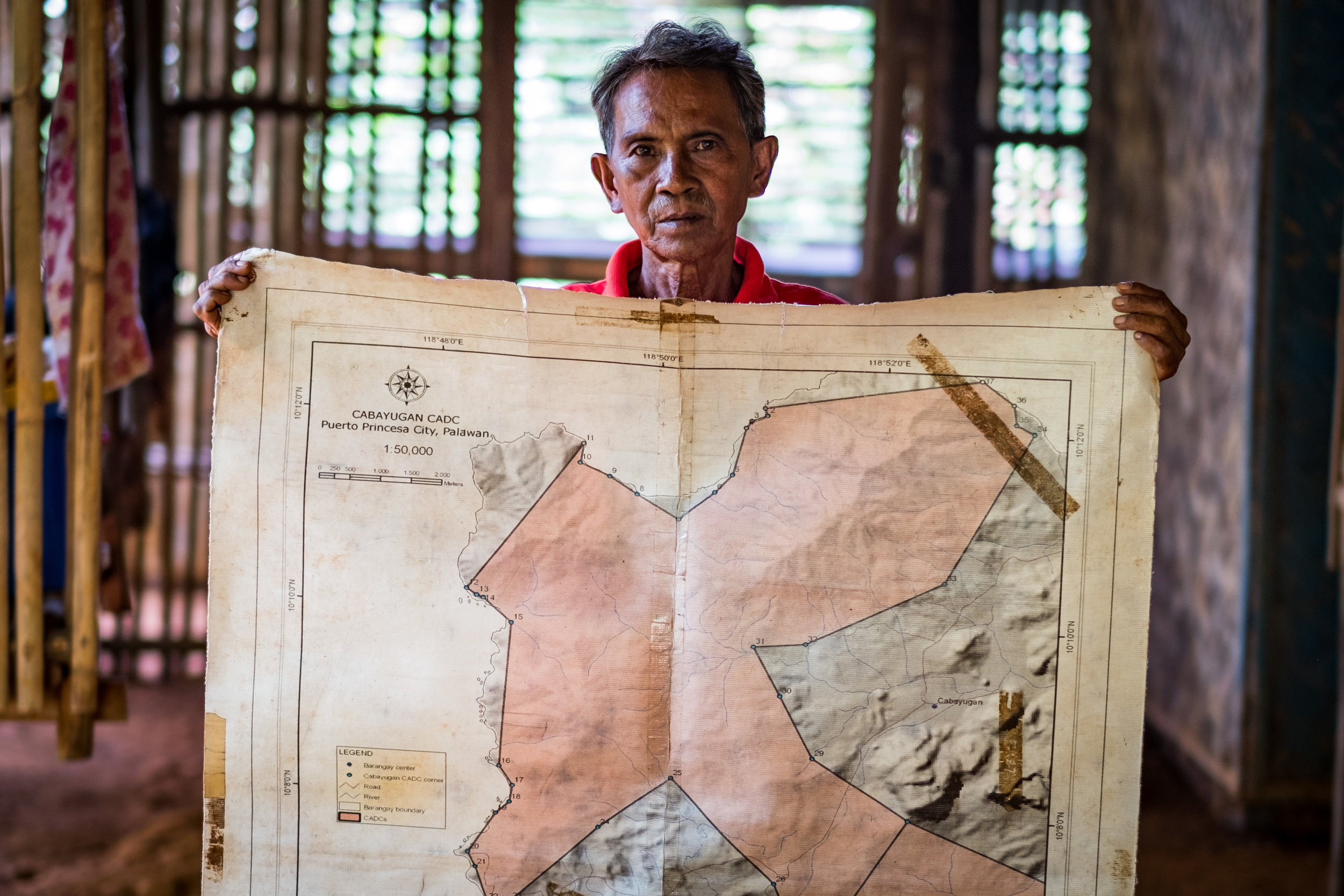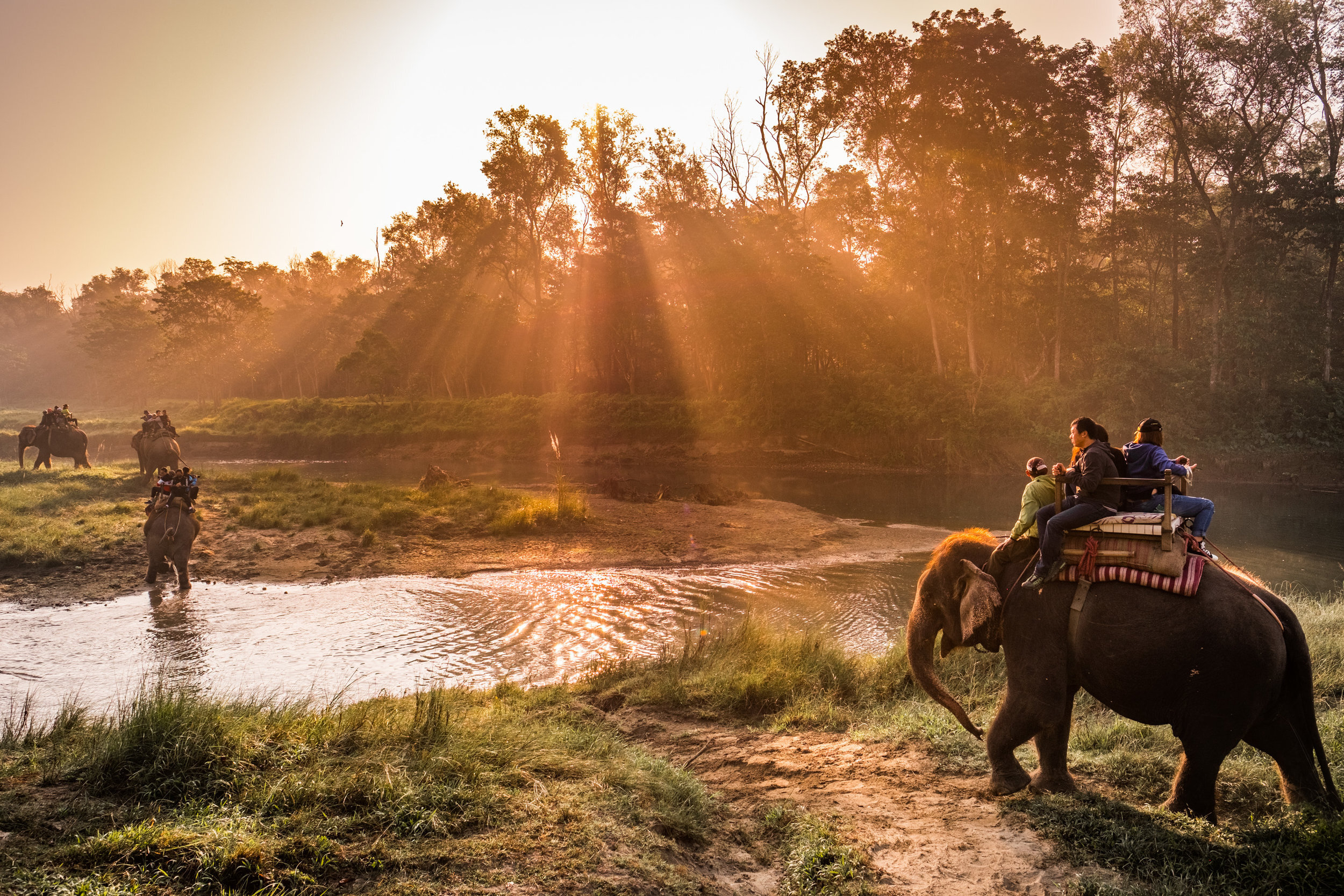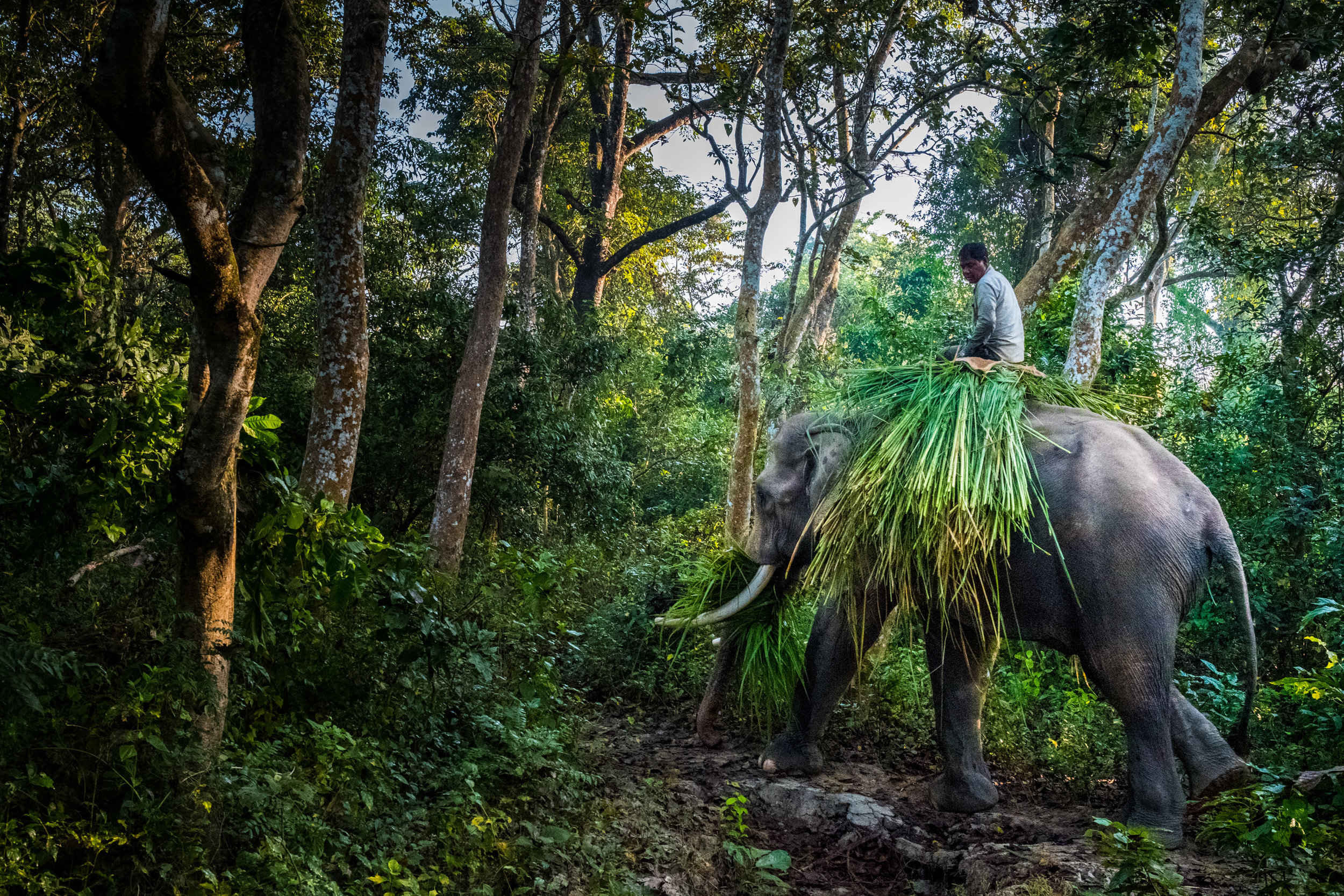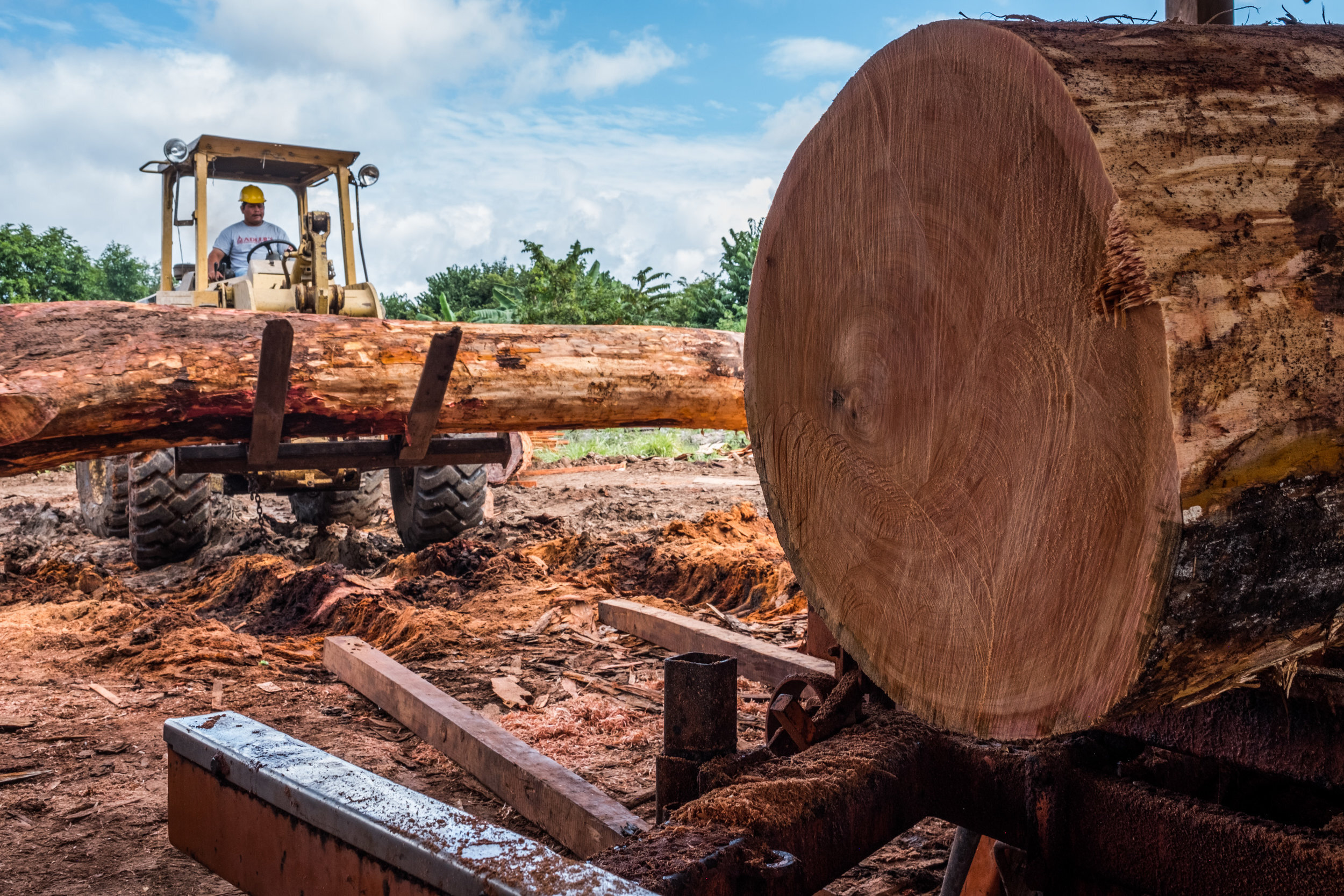
IMAGE LIBRARY AND RESEARCH DOCUMENTATION FOR USAID
For nearly 5 months in 2017 I traveled with USAID to six different global sites looking at the 20-year impacts of the United States’ investments in economic development as a means to biodiversity conservation. The results, which have so far included presentations, exhibitions, photo essays, and extensive reports, provide a rare 20-year lookback for anyone interested in conservation practices—and especially in the conservation enterprise approach to protecting biodiversity. The results proved to be an important document brought to life with visuals and anecdotal reporting:
Click here for an introduction in the form of a photo-driven overview of the project using Ersi's Story Map platform.
Click here for the full report, The Nature of Conservation Enterprises (and in Spanish).
To learn more about the project in general, click here or contact me and I'd be happy to chat.
Imugan is a small village of about 125 households and has been strongly influenced by the Kalahan Educational Foundation (KEF), much of that influence being around environmental awareness and sustainable use and protection of the surrounding forest. The village is literally innundated with crafts made by school children from plastic bottles and old tires as well as handpainted signs messaging classic environmental mantras such as 'reduce, reuse, and recycle' and 'protecting our environment is protecting our future'. Imugan, Nueva Vizcaya, Philippines.
Sayote, locally known as "Green Gold", is an increasingly popular cash crop that is replacing more traditional and less lucrative crops such as camote (a sweet potatoe). Sayote is planted on cleared hillsides under low wire trellises. Not only does the method require clearing forest, but it also can lead to devastating landslides during times of heavy rain or earthquakes, both of which are common in the region. Malico, Nueva Vizcaya, Philippines.
Enersto Bagiwan, farm worker at the Kalahan Educational Foundation (KEF)'s nursery above town, waters logs used for growing shiitake mushrooms. Imugan, Nueva Vizcaya, Philippines.
Lorna Tindaan farms sayote and rice, but financial success and support from relatives working abroad has allowed her family to build a large house and her four children to go to college. Education provides an alternative to traditional livelihoods harvesting from the forest. Imugan, Nueva Vizcaya, Philippines.
Rogelio Castillo photographs Rachel Lindon. Imugan Falls attracts weekend visitors from around the region, especially down in the valley, who are looking to escape the heat. Imugan, Nueva Vizcaya, Philippines.
Local markets provide for wants and needs. Being able to purchase rice, fish, and other goods is a primary driver of the need for cash and desire to be involved in enterprise projects. Puerto Princesa, Palawan, Philippines.
Rattan is received at LGCT's (a trader) site, treated with hot diesel oil (for preservation), dried on racks outside, and then straightened by hand before being bundled and stacked for shipment to China. Rattan is an important non-timber forest product (NTFP) and represents the difficulties and uncertainties inherent in ascertaining sustainable extraction levels and impacts associated with wild harvesting. In general there has been little or no monitoring or management of wild rattan harvesting and little is known about ecological effects associated with extraction. Quezon, Palawan, Philippines.
Rattan is received at LGCT's (a trader) site, treated with hot diesel oil (for preservation), dried on racks outside, and then straightened by hand before being bundeled and stacked for shipment to China. Rattan is an important non-timber forest product (NTFPs) and represents the difficulties and uncertainties inherent in ascertaining sustainable extraction levels and impacts associated with wild harvesting. In general there has been little or no monitoring or management of wild rattan harvesting and little is known about ecological effects associated with extraction. Quezon, Palawan, Philippines.
Eliseo Rodrigo, president of SATIKCA, holds documentation of their Certificate of Ancestral Domain Claim (CADC). Sugodi, Barangay Cabayugan, Palawan, Philippines.
The Gitenderi Mushroom Group, support each other in the growing and selling of mushrooms. Mwanjari near Kisoro, Uganda.
Women with a local artisans group are learning to weave traditional baskets as handicrafts for sale to tourists. The organization promotes close collaboration among the members, and they often help each other with small loans and technical skills. Unfortunately, they were evicted from their previous workshop and showroom and are now looking for another location. Nkuringo, Uganda.
Charles Nshakumanza is chairman of the Nkuringo Bee Keepers Multi-Purpose Co-Operative Society (NBMCS). The organization harvests, processes and sells honey based in a facility built in 2010 by UN-FAO. Some of the members were former poachers and Charles was a gold miner. And some of them used to harvest wild honey traditionally, which often included chopping open trees to get to the hives and using open fire to smoke the bees. All have stopped those practices now that they can make money beekeeping. Rubuguri, Uganda.
Charles Nshakumanza is chairman of the Nkuringo Bee Keepers Multi-Purpose Co-Operative Society (NBMCS). The organization harvests, processes and sells honey based in a facility built in 2010 by UN-FAO. Some of the members were former poachers and Charles was a gold miner. And some of them used to harvest wild honey traditionally, which often included chopping open trees to get to the hives and using open fire to smoke the bees. All have stopped those practices now that they can make money beekeeping. Rubuguri, Uganda.
Batwa guide, Machate Emanuel, leads the Buniga Community Forest Trail tour in his local language, The Batwa Pygmies were evicted from their home lands in the forest in the early 1990s when the National Parks were established, leaving them landless and poor in a society that saw them as a lower class. Today some of them try to make ends meet by hosting trail walks; cultural tours that include examples of where and how they use to live in the forest as well as singing, dancing, and handicrafts for sale. Nkuringo, Uganda.
Gorillas with the Rushegura group in Biwindi Impenetrable National Park. This group was one of the first in the area habituated for gorilla tracking tourism. Bwindi Impenetrable National Park, Uganda.
David Agenya, Head Ranger at the Bwindi Impenetrable National Park Buhoma Head Quarters, loads into the Land Cruiser with guards and guides in route to meet tourists at the launching point for the daily gorilla tracking tours. Buhoma, Uganda.
Gorillas with the Rushegura group in Biwindi Impenetrable National Park. This group was one of the first in the area habituated for gorilla tracking tourism. Bwindi Impenetrable National Park, Uganda.
The Batwa Pygmies were evicted from their home lands in the forest in the early 1990s when the National Parks were established, leaving them landless and poor in a society that saw them as a lower class. Today some of them try to make ends meet by hosting trail walks; cultural tours that include examples of where and how they used to live in the forest as well as singing, dancing, and handicrafts for sale. Buhoma, Uganda.
Producing Lokta bark paper at Malika Handmade Paper Pvt. Ltd. (MHPL) in the remote mountain town of Kailas, Bajhang District, Nepal. The process involves collecting Lokta (Daphne spp) bark, soaking it in a caustic bath, pulping it in a manual beater, pouring the pulp onto screens, and drying it in the sun. The paper is then carried in 50kg bundles on a four hour hike about 2000 meters down the mountain to Chainpur where it is loaded on buses for the 1000km 25 hour journey to Kathmandu. Kailas, Bajhang District, Nepal.
Producing Lokta bark paper at Malika Handmade Paper Pvt. Ltd. (MHPL) in the remote mountain town of Kailas, Bajhang District, Nepal. The process involves collecting Lokta (Daphne spp) bark, soaking it in a caustic bath, pulping it in a manual beater, pouring the pulp onto screens, and drying it in the sun. The paper is then carried in 50kg bundles on a four hour hike about 2000 meters down the mountain to Chainpur where it is loaded on buses for the 1000km 25 hour journey to Kathmandu. Kailas, Bajhang District, Nepal.
Producing Lokta bark paper at Malika Handmade Paper Pvt. Ltd. (MHPL) in the remote mountain town of Kailas, Bajhang District, Nepal. The process involves collecting Lokta (Daphne spp) bark, soaking it in a caustic bath, pulping it in a manual beater, pouring the pulp onto screens, and drying it in the sun. The paper is then carried in 50kg bundles on a four hour hike about 2000 meters down the mountain to Chainpur where it is loaded on buses for the 1000km 25 hour journey to Kathmandu. Kailas, Bajhang District, Nepal.
Preparing elephants with saddles for jungle safari rides to see rhinoceros and tigers in the Bagmara Buffer Zone, a practice that did a lot to involve the local community in lucrative activities with pro-conservation outcomes, but that animal rights groups and increasingly regular tourists, oppose. Sauraha, Chitwan District, Nepal.
Elephants with their handlers headed across town to give jungle safari rides to see rhinoceros and tigers in the Bagmara Buffer Zone. Sauraha, Chitwan District, Nepal.
Local guides benefit from taking tourists on nature tours in canoes on the Bhude Rapti River. Bagmara Buffer Zone. Sauraha, Chitwan District, Nepal.
Tourists take jungles safaris on elephants in hopes of viewing a Greater One-horned Rhinoceros (Rhinoceros unicornis). Bagmara Buffer Zone. Sauraha, Chitwan District, Nepal.
Two elephants at Traveler's Rest Camp. National Trust for Nature Conservation (NTNC) provides free verterinary services to the elephant owers in support of the ecotourism as an enterprise benefitting conservation outcomes. Sauraha, Chitwan District, Nepal.
Greater One-horned Rhinoceros (Rhinoceros unicornis). Chitwan National Park, Nepal.
A military elephant is used to collect grasses in Chitwan National Park. Sauraha, Chitwan District, Nepal.
Local military stationed to help protect Chitwan National Park take selfies with a Greater One-horned Rhinoceros (Rhinoceros unicornis). Sauraha, Chitwan District, Nepal.
Elephant. National Trust for Nature Conservation offices (NTNC) offices. Sauraha, Chitwan District, Nepal.
The Musahar are one of the poorest, most marginalised groups around Chitwan National Park and receive only limited shares of the benefits generated by local community forests, yet they also rely most directly on the forest for some basic subsistence needs such as fuel wood. Sauraha, Chitwan District, Nepal.
The Musahar are one of the poorest, most marginalised groups around Chitwan National Park and receive only limited shares of the benefits generated by local community forests, yet they also rely most directly on the forest for some basic subsistence needs such as fuel wood. Sauraha, Chitwan District, Nepal.
The Musahar are one of the poorest, most marginalised groups around Chitwan National Park and receive only limited shares of the benefits generated by local community forests, yet they also rely most directly on the forest for some basic subsistence needs such as fuel wood. Sauraha, Chitwan District, Nepal.
Sauraha's economy is dominated by tourism related to the nearby Chitwan National Park where elephants are used for giving rides to see rhinoceroses and tigers. Sauraha, Chitwan District, Nepal.
Elephants walking down the main street in Sauraha is common place -- and happens several times a day, everyday. Sauraha's economy is dominated by tourism related to the nearby Chitwan National Park where elephants are used for giving rides to see rhinoceroses and tigers. Sauraha, Chitwan District, Nepal.
By setting up their own community based sorting and processing 'bodega' for xate, the community of Uxactun has converted a very low value resource to a more value-added one, but more importantly, has created an oportunity for a majority of the families in the community to earn a better basic base income. Uaxactun, Guatemala.
loria Alvarez, a clerk with Organización Manejo y Conservación, distributes money to community members involved in collecting and processing xate palm. As part of developing the local capacity for business, parents often send their children to collect the money, expanding on and putting to practice the basic financial skills they are being taught in school. Uaxaxtun, Guatemala.
Cutting spanish cedar. The sawmill in Uaxactun is Forest Stewardship Council (FSC) certified and provides good income from a sustainable resource for not only the saw operators but also many others who help keep the operation running. Uaxactun, Guatemala.
A mechanic fixes the suspension on one of the sawmill's trucks. The sawmill in Uaxactun is Forest Stewardship Council (FSC) certified and provides good income from a sustainable resource for not only the saw operators but also many others who help keep the operation running. Uaxactun, Guatemala.
María Marimadias Flores processes Ramón seeds at Alimentos Naturinaturales where the traditional Mayan food is made into various products. Ixlù, Guatemala.
The furniture workshop for Arbol Verde where they use sustainable forest products from regional community forest concessions to make furniture. Ixlù, Guatemala.
Felisa Navas Pérez is the president of the the Asociación Forestal Integral Cruce la Colorada (AFICC). She stepped up and assumed the leadership role after a former president was murdered and no one else wanted the job. The AFICC sawmill in Carmelita sustainably harvests mahogany and other timber from its community forest concession. Carmelita was the first concession in the region 20 years ago and is looking towards having to renew the contract with the government in 5 years. Carmilita, Guatemala.
The Asociación Forestal Integral Cruce la Colorada sawmill in Carmelita sustainably harvests mahogany and other timber from its community forest concession. Carmelita was the first concession in the region 20 years ago and is looking towards having to renew the contract with the government in 5 years. Carmilita, Guatemala.
Alelexa Gabriela, 11, is crowned Princesita del Lago and one of the featured celebrities at the town of Carmilita's 20th anniversary celebration of their community forest concession. Carmilita, Guatemala.












































